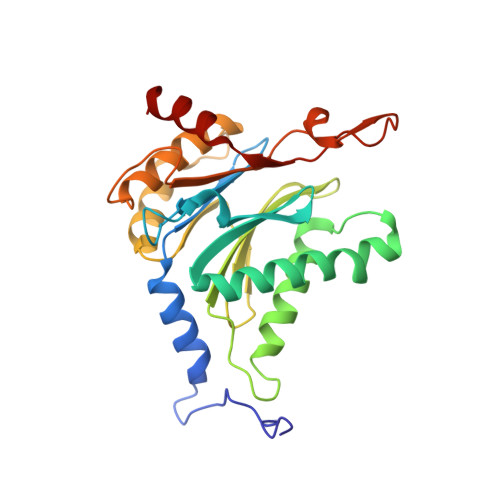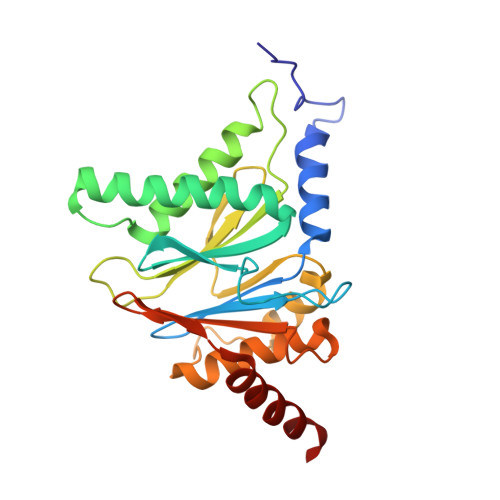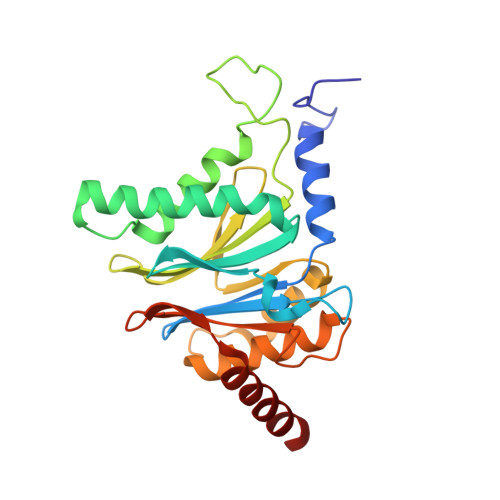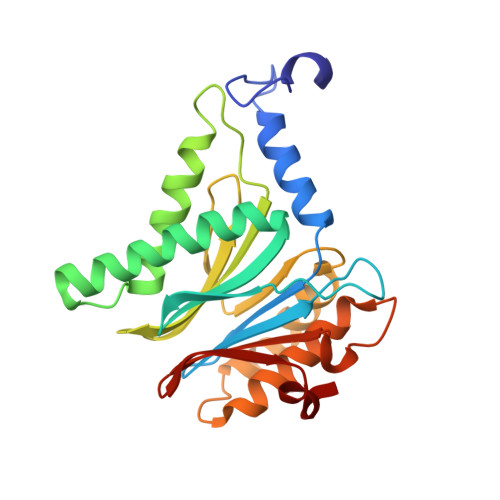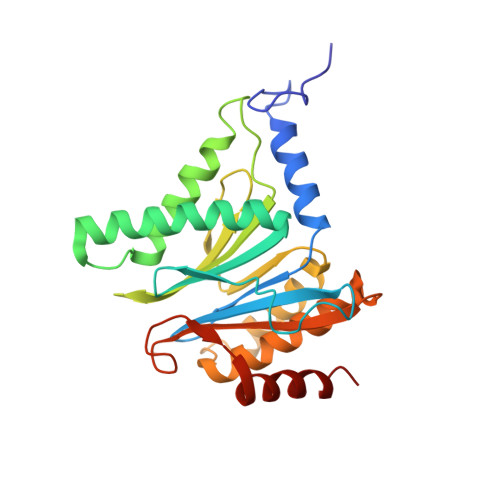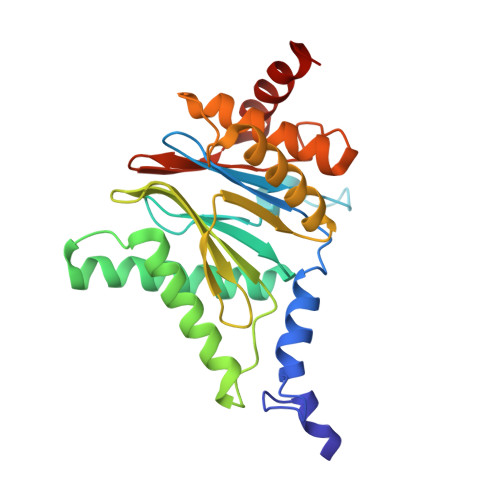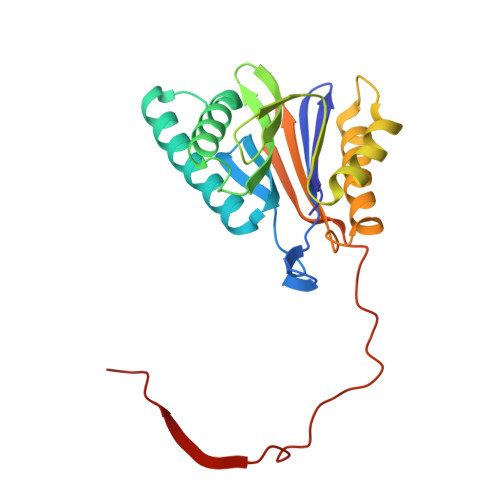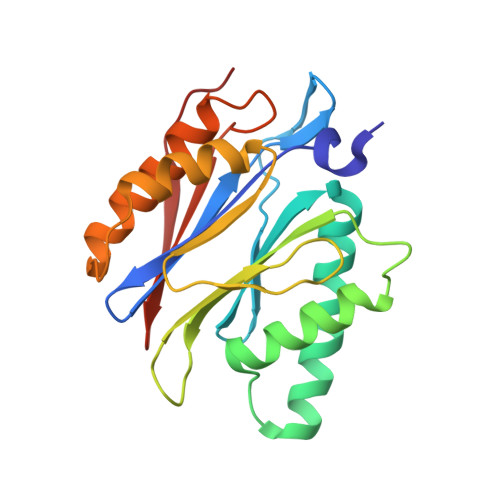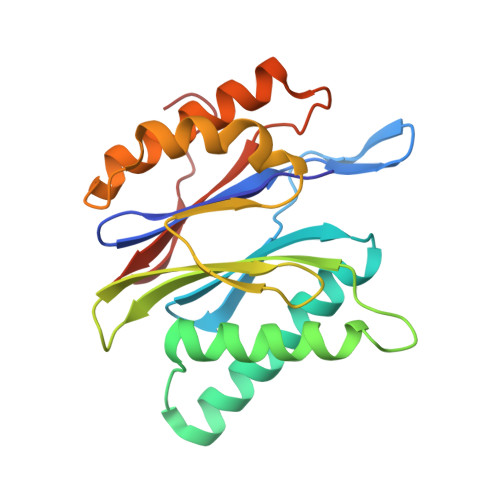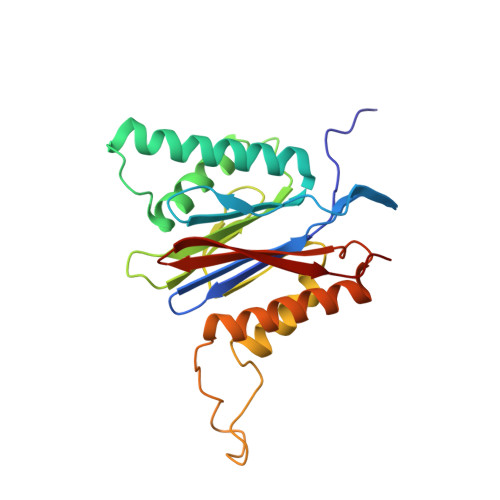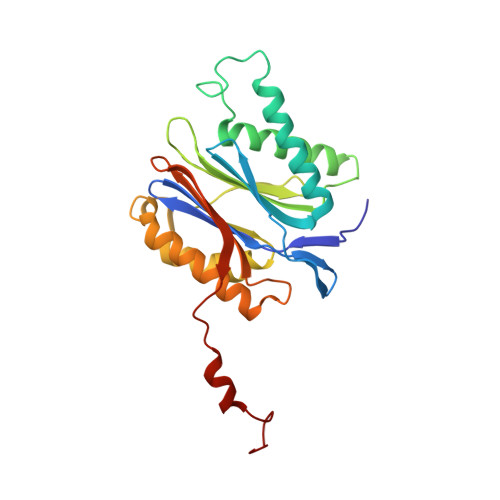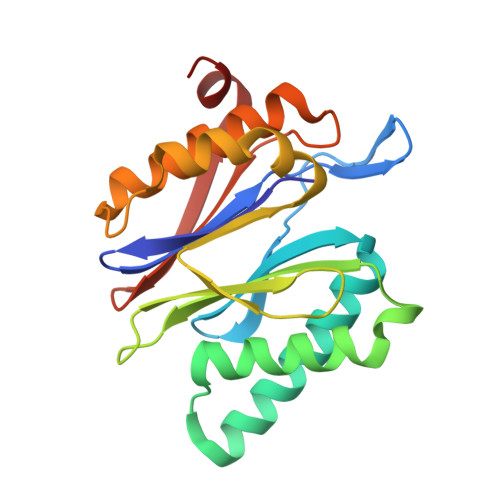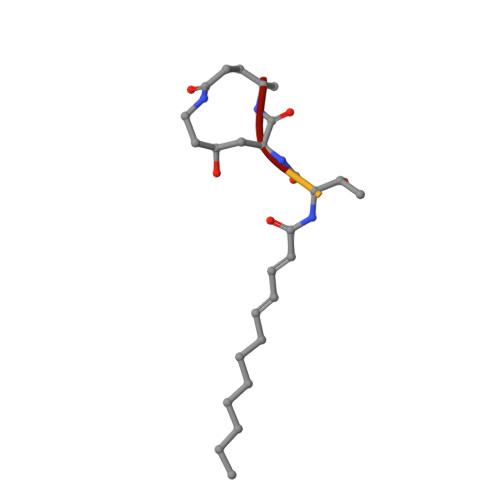One-shot NMR analysis of microbial secretions identifies highly potent proteasome inhibitor.
Stein, M.L., Beck, P., Kaiser, M., Dudler, R., Becker, C.F., Groll, M.(2012) Proc Natl Acad Sci U S A 109: 18367-18371
- PubMed: 23091006
- DOI: https://doi.org/10.1073/pnas.1211423109
- Primary Citation of Related Structures:
4FZC, 4FZG - PubMed Abstract:
Natural products represent valuable lead structures for drug discovery. However, for most bioactive compounds no cellular target is yet identified and many substances predicted from genome analysis are inaccessible due to their life stage-dependent biosynthesis, which is not reflected in common isolation procedures. In response to these issues, an NMR-based and target-directed protease assay for inhibitor detection of the proteasome was developed. The methodology is suitable for one-shot identification of inhibitors in conglomerates and crude culture broths. The technique was applied for analysis of the different life stages of the bacterium Photorhabdus luminescens, which resulted in the isolation and characterization of cepafungin I (CepI), the strongest proteasome inhibitor described to date. Its biosynthesis is strictly regulated and solely induced by the specific environmental conditions determined by our methodology. The transferability of the developed technique to other drug targets may disclose an abundance of novel compounds applicable for drug development.
Organizational Affiliation:
Center for Integrated Protein Science at the Department Chemie, Lehrstuhl für Biochemie, Technische Unversität München, 85748 Garching, Germany.








